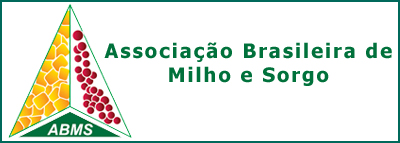RESPOSTAS MORFOAGRONÔMICAS DE MILHO SUBMETIDO A DESFOLHA ARTIFICIAL
DOI:
https://doi.org/10.18512/1980-6477/rbms.v16n3p460-468Palavras-chave:
zea mays, dano foliar, produtividadeResumo
RESUMO - O objetivo deste estudo foi avaliar as características morfoagronômicas do híbrido simples de milho em função da aplicação de diferentes intensidades de desfolha artificial, realizadas no estádio R1 de desenvolvimento. O experimento foi conduzido na área experimental do Instituto Federal Goiano,em Morrinhos-GO, na safra 2015/2016. Foi aplicado o delineamento de blocos completamente casualizados, com oito tratamentos e quatro repetições, sendo eles: remoção de uma folha acima e uma abaixo da espiga; remoção de duas folhas acima e abaixo da espiga; remoção de três folhas acima e abaixo da espiga; remoção de todas as folhas da planta; remoção de todas as folhas acima da espiga; remoção de todas as folhas abaixo da espiga; remoção da folha da espiga; e testemunha sem desfolha. Os caracteres avaliados foram: estande de plantas, número de plantas acamadas, prolificidade, densidade de colmo, comprimento e diâmetro de espiga, comprimento de grão, massa de mil grãos, massa de grãos espiga-1 e produtividade. Os dados foram submetidos à análise de variância pelo teste F a 5% de probabilidade, observando que todas as variáveis avaliadas foram influenciadas quanto aos efeitos dos tratamentos empregados. O enchimento dos grãos esteve intimamente relacionado à fotossíntese. Sem as folhas, esta fase ficou plenamente comprometida.
Palavras-chave: Zea mays, fotoassimilados, translocação, índice de área foliar, rendimento.
MORPHOAGRONOMIC CHARACTERISTICS OF MAIZE AS A FUNCTION OF DIFFERENT LEVELS OF ARTIFICIAL DEFOLIATION
ABSTRACT - The objective of this study was to evaluate of morphoagronomic characteristics of simple hybrids of maize, depending on the application of different intensities of artificial defoliation, carried out in R1, when the style-stigma were fertilized. The experiment was conducted in an experimental area of the Instituto Federal Goiano, Campus Morrinhos, State of Goiás, Brazil, during the agricultural year 2015/2016. We applied the design of completely randomized block with eight treatments, in four replications: removal of a leaf above and one below the ear; removal of two leaves above and below the ear; removal of three leaves above and below the ear; removal of all leaves of the plant; removal of all leaves above the ear; removal of all leaves below the ear; removal of the leaf of the ear; and control without defoliation. The traits evaluated were stand of plants, number of plant lodging, prolificacy, density, length and diameter of the cob, length of a grain, weight of a thousand grains, grain mass cob-1 and productivity. The data obtained were subjected to analysis of variance by F test at 5% probability, noting that all variables were influenced as to the effects of the treatments used. The filling of grains is closely related to photosynthesis. Without the leaves, this phase was fully damaged.
Keywords: Zea mays L., photoassimilates, translocation, leaf area index, yield.
Downloads
Publicado
Como Citar
Edição
Seção
Licença
Autores que publicam nesta revista concordam com os seguintes termos:- Autores mantém os direitos autorais e concedem à revista o direito de primeira publicação, com o trabalho simultaneamente licenciado sob a Creative Commons Attribution License que permitindo o compartilhamento do trabalho com reconhecimento da autoria do trabalho e publicação inicial nesta revista.
- Autores têm autorização para assumir contratos adicionais separadamente, para distribuição não-exclusiva da versão do trabalho publicada nesta revista (ex.: publicar em repositório institucional ou como capítulo de livro), com reconhecimento de autoria e publicação inicial nesta revista.
- Autores têm permissão e são estimulados a publicar e distribuir seu trabalho online (ex.: em repositórios institucionais ou na sua página pessoal) a qualquer ponto antes ou durante o processo editorial, já que isso pode gerar alterações produtivas, bem como aumentar o impacto e a citação do trabalho publicado



